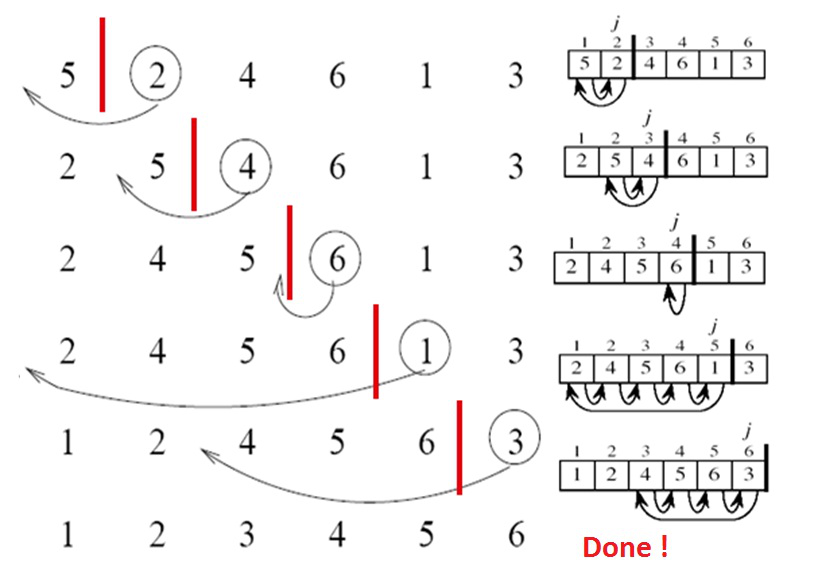|
|
3 years ago | |
|---|---|---|
| .. | ||
| Insertion-Sort-demo.png | 4 years ago | |
| README.md | 3 years ago | |
README.md
insertion_sort
Instructions
Implement the insertion-sort algorithm by creating a function named insertion_sort. It should execute the iterations of the algorithm up to the number indicated by steps. See the Usage for more information.
The insertion-sort algorithm sorts an array of size n in ascending order.
-
Iterates over the slice from
slice[1]toslice[n]. -
Compares the current element (
slice[key]) to its predecessor (slice[key-1]). -
If
slice[key]is smaller thanslice[key-1], thenslice[key]is compared toslice[key-2]and so on. -
All of the elements with values greater than
slice[key]will need to be shifted over, to fit the value atslice[key]into its new position.
A step-by-step example of insertion-sort:
Figure 1 - Step by step execution of the algorithm insertion sort
Expected Function
pub fn insertion_sort(slice: &mut [i32], steps: usize) {
}
Usage
Here is a possible program to test your function,
fn main() {
let mut target = [5, 3, 7, 2, 1, 6, 8, 4];
// executes the first iteration of the algorithm
insertion_sort(&mut target, 1);
println!("{:?}", target);
let mut target = [5, 3, 7, 2, 1, 6, 8, 4];
let len = target.len();
// executes len - 1 iterations of the algorithm
// i.e. sorts the slice
insertion_sort(&mut target, len - 1);
println!("{:?}", target);
}
And its output:
$ cargo run
[3, 5, 7, 2, 1, 6, 8, 4]
[1, 2, 3, 4, 5, 6, 7, 8]
$
